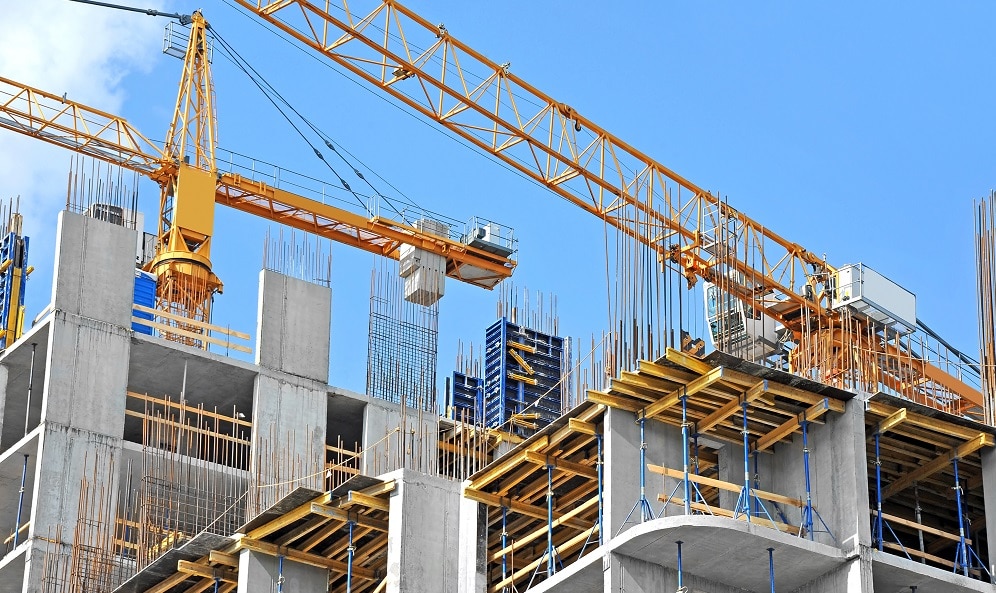Scaffolding Inspection
When it comes to scaffolding, safety is essential. That’s why inspections are necessary to ensure people are working in a safe environment. We carry out preliminary scaffolding inspections and scheduled on-site inspections to keep your project right on track, no matter how big or small. Our team of professional inspectors will ensure that your scaffold is safe and structurally sound.
We provide a professional service and use only the high quality scafftag system. We inspect the site for any hazards and safety precautions before and after we dismantle your scaffold systems. We carry out regular inspections and, if necessary, maintenance so that you’ll have your scaffolding available at all times. You can rest assured your project is in safe hands.
Ace Scaffolding has an excellent safety record, and an on-site Health & Safety Rep will be on your site while we work. We’re here to help, no matter your scaffolding needs. Need more information? Talk to Our Experts We would be happy to offer you any advice or guidance you require regarding scaffolding.
We Are Also Available to Offer Scaffolding Related Advice

The Fundamentals of Scaffolding Inspection
Ace Scaffolding can conduct an independent statutory inspection, and we run on-site scaffold monitoring services in line with regulation 12(7) of the 2005 Work at Height Regulations. Ace Scaffolding provides independent scaffolding inspections on behalf of scaffolding customers throughout the Seaford area. The user must ensure that the framework structure is safe, operational and in good condition. Our independent inspectors are completely impartial when assessing your scaffolding requirements.
Why are Scaffolding Inspections Important?
Scaffolding is a complete access form that is used in numerous ways throughout construction sites. When in use, large framed scaffolding is prominently displayed on construction sites. For renovation work, it could be the first sign that a building project has started from the outside. Working at heights, however, could be highly risky. In 2017/18, there were 35 fatal crashes from height accidents. Research by the Health and Safety Executive (HSE) revealed up to 8% of non-fatal RIDDOR injuries were caused by falls from heights. HSE treats compliance as a mandatory requirement for scaffolding users. Tracking compliance is a key part of their duty to ensure that standards are maintained.
When is the Best Time to Conduct Scaffold Inspections?
The 2005 Working at Heights Standard demands an inspection of your scaffolding before work begins, and on a weekly basis afterwards until it’s dismantled. Any scaffold needs to be inspected regularly and maintained by a professional. It may need attention if it’s exposed to adverse weather or accidents, so that you and those around you are safe. It is your responsibility as the user to ensure that the scaffolding has been properly inspected. If it hasn’t, don’t use it.
Who Should Carry Out the Inspection?
HSE guidelines insist that scaffold inspections should be performed by skilled personnel who have adequate knowledge of the structure and its intended uses, the design of the scaffold, and inspection and maintenance requirements. CISRS scaffold inspector qualifications are essential for anyone working in construction and scaffolding. This qualification is widely held by scaffolding industry stakeholders as the standard for a competent scaffold inspector.
On the other hand, an individual who has received training in work practices, as well as scaffolding safety inspection from an accredited supplier or manufacturer can inspect scaffolding. A person may be certified to inspect a basic scaffolding structure if they’ve been trained in scaffold inspection methods, and have successfully completed an inspector certification course. For each inspection, a written report must be kept on-site until work is completed. After the construction work is completed, the various reports should be kept at an office location for another three months.
A scaffold inspection report should reveal compliance with regulatory requirements and provide a record of threats to health and safety and the measures taken to protect the stakeholders. This will help identify a recurring problem. Each scaffolding report should contain the following: The name and address of the individual or organisation for whom the inspection was conducted. The name and position of the scaffolding inspector. The project time, date, and plate. A description of the worksite or the location of the scaffolding inspection.
The noted defects, deficiencies, and problems which could endanger the health or safety of persons occupying or working in or on the building and how to solve them. Details of other safety measures deemed appropriate. Ace Scaffolding Seaford offers thorough and expert advice on all aspects of scaffolding. We ensure the smooth running of your project. We have the expertise to carry out independent scaffolding inspections, oversee audits and scaffolding activities. We provide training for scaffold inspectors at all levels.
Our Guarantee
- Over Six Years Experience
- Unrivaled Experience
- An Exceptional Service
- Unbeatable Value For Money
- Industry-approved Scaffolders
- A Full Range of scaffolding Services
- Professional, Reliable and Diligent
- 100% Safety and Satisfaction
How Often Should Scaffolding be Inspected?
Scaffolding must have passed inspection within the last 7 days to be fit for use. It is critical that all the equipment, tools, and materials used during construction are safe for both workers and the general public. A preliminary inspection normally follows the scaffold installation The inspection is logged as a handover certificate. The scaffolding is safe to use as long as it passes the inspection.

Regular inspections will then ensure that the scaffolding is safe for use. This should be done on a weekly basis until the scaffolding is dismantled. If the scaffolding has not been inspected for more than 7 days, no one may use the scaffolding. You will need to carry out additional inspections in cases where the scaffolding is changed in between scheduled inspection dates. Inspections are necessary in unexpected situations.
These situations include stormy weather, with high winds known to cause damage to scaffolding. This can be the case if something were to affect the scaffolding; for example, a machine or a vehicle. To prevent accidents, the inspection system should apply to work platforms with a fall risk above 2 metres. During the inspection, the various components of the scaffold are examined, including foundations, bracing, crash barriers, and others. Problems with the framework, defects, and unauthorised changes are identified and fixed as soon as possible.
When is a Harness Inspection Necessary?
Here are the 3 recommended inspection levels:
Pre-Use Testing
A regular visual inspection carried out by the user prior to each shift is a key component in the maintenance of our scaffolding systems, ensuring that the system is in good working order and that it meets all the relevant requirements. Any deficiencies should be reported to your employer.
Detailed Inspection
An officially recorded inspection should be performed at least every six months. However, for frequently used equipment, we recommend increasing this value to at least every three months, especially if the equipment is used in difficult environments such as scaffolding demolition, steel masts/towers with edges, and steel assembly areas.
Interim Inspection
It is a robust, recorded inspection used as a supplement to the pre-use and detailed inspections. Interim inspections require a detailed inspection if the risk assessment exercise identifies a risk that could lead to serious deterioration and compromise the lanyard ahead of the next detailed inspections due date. Facilities and equipment that experience higher usage rates or more strenuous use are subject to more frequent interim inspections.
Relevant examples include the dangers of working in high-risk environments using chemicals, sandblasting, or paint. Some additives could carry acid and alkaline risks. Therefore, to prevent these risks where the components that make up the compound cannot be adequately identified from occurring, periodic interim inspections should be performed.
Scaffolding Types

Who is Responsible for Inspecting Scaffolding?
According to the Health and Safety Regulation of 1999, it is the responsibility of every employer to ensure that the working environment is safe and risk-free. They should make a risk assessment of all factors related to the workplace and employees’ work. The Construction Regulation (Design and Administration) of 2015 states that commercial project owners must make sure the work activities are not harmful to the health and safety of their employees and the general public. For a domestic customer, the contractor, builder, or scaffolder is in charge of on-site safety.
Legal Requirements for Scaffold Inspection
Scaffolding should pass inspection, with confirmation in the form of a test report or handover protocol, before being put to use. Regular inspections every week is necessary to ensure the safety of a scaffolding system. The scaffolding must be inspected regularly for events that could affect the structure’s safety such as changes, adverse weather, or an earthquake.
Inspection reports must be kept in a format that can be reproduced in printable form and protected against loss or tampering. Before the end of the working period, the inspection report is prepared by the inspector and sent to the employer within 24 hours. The employer must keep a copy of the report where the inspection was performed. The employer also must keep a copy of the report in a file at his or her office for 3 months from the date on which a copy of it was received.
We Are Also Available to Offer Scaffolding Related Advice
What Information Will You Find in an Inspection Report?
The inspection report must indicate the name and address of the individual or organization for whom the inspection was done. The location of the inspection exercise. The scaffolds description checks. Time and date of inspection. Information about any issue that could lead to an increase in risks to the safety or health of anyone on site. Actions taken to resolve problems reported by the inspector. Information on moves that are deemed important. The name and position of the individual who is in charge of the inspection report.
Recommendations by NASC
- If an employer can successfully prove that a CISRS cardholder has the required experience, they will be regarded as competent to inspect scaffolding which is covered in Parts 1 & 2 of CISRS’s course modules.
- If you are looking to get the contents of CISRS courses, check out CAP 609 General Information Booklet Appendix A-F pages 37-52. For a person to be certified as a scaffold inspector, he/she must go through the CISRS Basic Scaffold Inspection Training Scheme course.
- The CISRS Advanced Scaffold Inspection Training Scheme is developed and designed by experts in the field of scaffolding, successfully passing the knowledge test provides you with advanced knowledge to assist you to conduct inspection of complex scaffold structures.
- This is a very essential course for experienced scaffold inspectors, supervisors, and managers who are in charge of handing over scaffolds, inspections, commissioning, and filling reports in compliance with Work at Height Regulations 2005.
- A CISRS SITS qualification lasts for 5 years. If you need to renew your CISRS SITS certification, you must re-sit the course. This is the only way to remain qualified as a professional inspector. The first step in scaffold inspection is familiarizing yourself with the system you will be inspecting. You should find out what kinds of scaffolds are in use and how to inspect them properly. One can get this done through CISRS-approved training providers, the manufacturer, or the supplier.
We Are Also Available to Offer Scaffolding Related Advice
Our Emergency and Monitoring Scaffolding Inspections
We offer scheduled inspection services for scaffolding including emergency exercises. Deliverables for our inspection services include a written report and digital photographs.
Frequently asked questions
Should Scaffolds be inspected every day?
Can Scaffolding be Used in the Rain?
Are Scaffolding Tags Legally Required?
How Many Days does a scaffold tag stay valid after an inspection?
What is the Meaning of a Yellow Scaffold Tag?
Is a License Needed Before a Scaffold Gets Erected?
What Qualifications are needed for scaffolding?
How Long Should Scaffolding Record be on Site?
How Long before One Becomes a Qualified Scaffolder?
Is a Scaffold Handover Certificate Legally Required?
How frequently should equipment for working at Height be inspected?
What is a Standard in Scaffolding?
When are Inspections needed on a Mobile Scaffolding Tower?
Get in Touch With us for Your Scaffolding Hire Quotes












